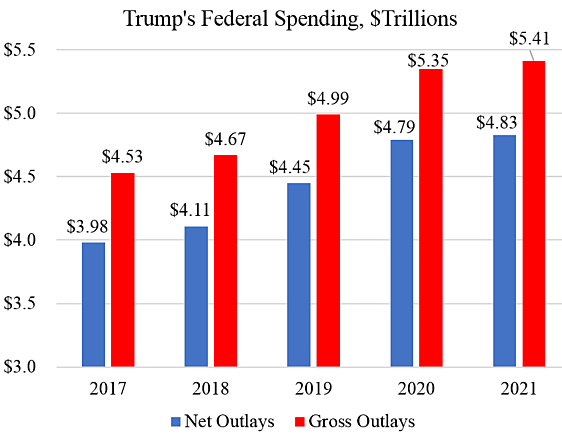President Trump’s new budget projects that federal spending will rise to $4.83 trillion in fiscal year 2021. When Trump came into office in 2017, spending was $3.98 trillion. In just four years under this president, spending will be up $850 billion, or 21 percent.
In reality, however, federal spending in 2021 will be more than $4.83 trillion. That figure is “net” outlays, but “gross” outlays will be $5.41 trillion, as shown in the chart. Reporters and budget wonks usually use the net figure, but the gross figure is the government’s actual total spending.
The difference is “offsetting collections” and “offsetting receipts” from the public. These revenues are netted against spending at either the program level, agency level, or government-wide level. Some examples are national park fees, postal service revenues, and Medicare premiums. There are hundreds of such cash inflows to the government that are deducted from spending before reaching the widely reported net.
Net outlays in 2021 will be 20.7 percent of gross domestic product, while gross outlays will be 23.2 percent. The latter is a better measure of the share of the economy controlled by the federal government through spending.
The Office of Management and Budget buries gross outlay data in the budget here, while the Congressional Budget Office does not report it. But citizens are entitled to full information about the government’s large footprint on the economy. OMB and CBO should highlight gross outlays in their main budget tables.

